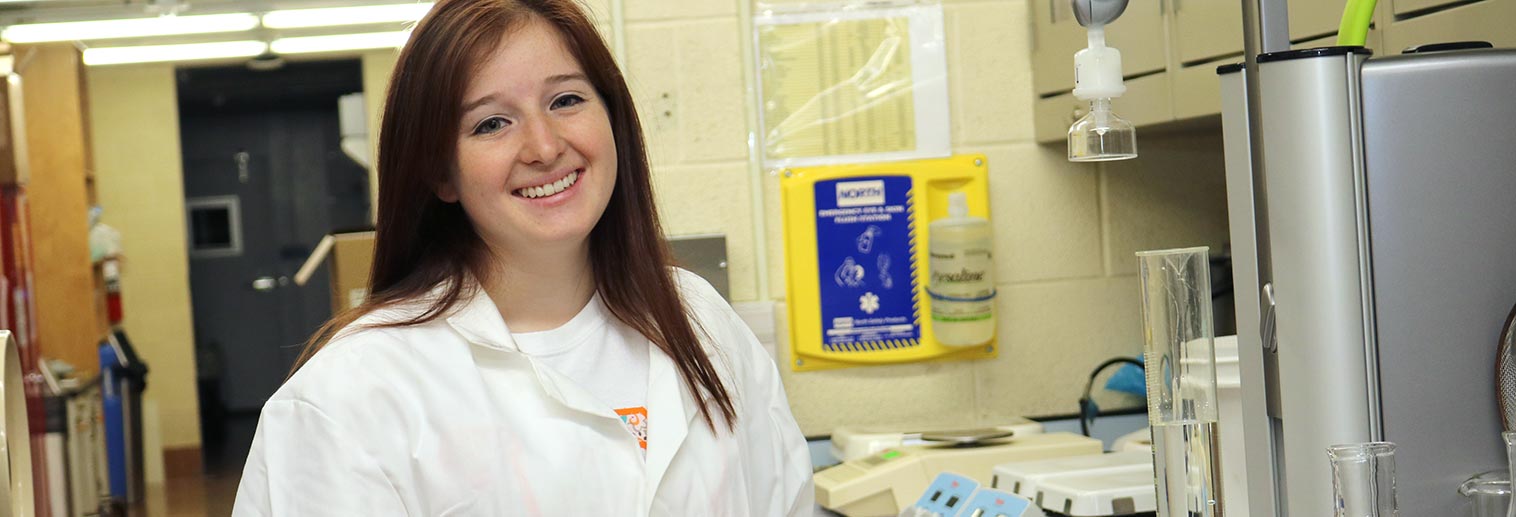CRYSTAL COLLINS '17
“Antibiotic Tolerance: Distinguishing between Classical Resistance and Persistence in a Macrophage Infection Model”
Major/Minor: Biology/Chemistry
Hometown: Huntingdon, PA
Project Mentor: Dr. Kara Mosovsky
Briefly describe your SOAR project.
Melioidosis is a deadly disease caused by a bacterial pathogen, Burkholderia pseudomallei. Currently, there is no vaccine to treat against this inherently antibiotic resistant bacterium. My mentor, Dr. Kara Mosovsky, completed experiments in her graduate studies to prove that there was synergistic killing of this bacterium while treating with an antibiotic called ceftazidime, and a white blood cell activator, IFN-gamma. I wanted to continue her research and go a different route by examining if the treated extracellular bacteria were known as antibiotic resistant or persister cells. I did this by using a model organism called Burkholderia thailandensis and conducting experiments to kill the bacteria and to see how many remained.
Why did you decide to turn your idea into a SOAR project?
Since I was a Teacher’s Assistant for Microbiology in the spring of 2016, I enjoyed working with bacteria and teaching the students the methods/techniques for proper handling of bacteria. I wanted to continue working in the Microbiology lab and reached out to Dr. Mosovsky during my junior year to see if I was able to continue her research during the summer.
How did your faculty advisor guide you through your research?
The best part about working with my faculty mentor was learning new information about the research that I was conducting. My mentor would assist me every step of the way to ensure that I was succeeding this summer.
What has been your biggest obstacle so far?
The biggest obstacle I have faced so far has been not receiving the results that I intended on conducting. I initially hypothesized that the extracellular bacteria were persister cells because they were not being killed off by the antibiotic treatment. However, when looking at my results, I discovered that might not be the case. The extracellular bacteria could be sensitive to the antibiotic.
What has been your biggest takeaway from this experience?
My biggest takeaway from this experience is the passion that I have for science and the health field. This was a spectacular opportunity to indulge in new studies and extraordinary research that may be published in the future.
What was the result of your project?
As a result of this project, I was able to discover a variety of new opportunities for future research. I expected to answer whether the extracellular bacteria is classified as being antibiotic resistant or persister cells. While conducting research, I learned many other interesting results such as the particular timepoints that suggest persistence vs resistance, and also how much concentration of antibiotic I need to inhibit killing. I am satisfied to have understood complex concepts, techniques, by reading primary journal articles relevant to the research.
Will you expand on your research after this summer is over? If so, where would you like to see it go?
I will continue to work on this project as an Independent Study with Dr. Mosovsky in the fall and spring semesters. I would like to classify the extracellular bacteria as persister cells or antibiotic resistant cells. Additionally, I would like to do a similar project with the intracellular bacteria in white blood cells.
In your own words, how do you feel about being awarded this opportunity?
Participating in the SOAR program at Moravian University was a great opportunity. I developed skills in the laboratory and learned how to conduct experiments. Students should take advantage of this program at Moravian University because it allows students to interact with other students from different departments and prepares individuals how to properly conduct research.

